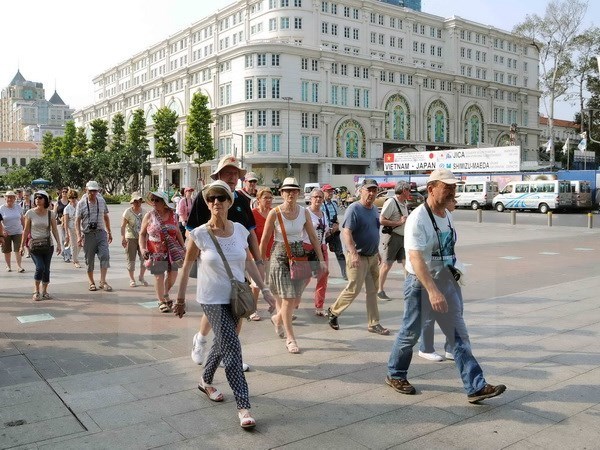
More than 2.86 million foreigners was estimated to visit Vietnam in January and February, up 29.7 percent from the same period in 2017.

Illustrative photo (Source: VNA)
According to the General Statistics Office of Vietnam, Asian
visitors made up the lion’s share of the number, at over 2.12 million people,
increasing 35.8 percent year on year. The number of Chinese visitors, which
accounted for 30 percent of the total tourist arrivals in Vietnam during the
period, grew by 38.5 percent annually.
The numbers of tourist arrivals by air, road, and sea during the two-month
period recorded respective annual increases of 26.3, 58.4, and 3.5 percent.
The Vietnam National Administration of Tourism said it aims to serve between 15
and 17 million foreigners and 78 million domestic travellers this year, with
total revenue expected to hit 620 trillion VND (27.28 billion USD), up 21.35
percent on year.
Vu The Binh, Vice Chairman of the Vietnam Tourism Association, said Northeast
Asia, including China, the Republic of Korea (RoK), Japan, Taiwan (China), will
continue to be the major sources of tourists to Vietnam. Last year, China and
the RoK sent 4 and 2.4 million visitors to Vietnam.
With a growth of 30 percent in tourism in 2017, Vietnam for the first time came
on the list of countries with fastest tourism growth speed in the world,
ranking at the 6th place.
Source: VNA
Located just a 20-minute drive from Hoa Binh City, Ora Hill Farmstay & Glamping Hoa Binh is a captivating new destination nestled in Mo hamlet, Bình Thanh commune, Cao Phong district. Combining farming with leisure, this tranquil retreat is perfect for those seeking balance, joy, and an immersive experience in the expansive beauty of nature.
Muong Bi - Tan Lac is renowned as one of the four famous Muong regions in Hoa Binh province. Blessed by nature with a favourable climate and stunning landscapes, Tan Lac holds great advantages for tourism development. The local tourism industry has made remarkable strides in recent times thanks to the attention and support from the local authorities and sectors.
With its strategic location, well-developed transport network, and diverse soil and climatic conditions, Hoa Binh is emerging as a must-visit destination in Vietnam's northwestern tourism corridor. The province boasts numerous attractions, including the Kim Boi hot springs (Kim Boi district), the Dau Rong cave complex (Cao Phong), the Mai Chau valley (Mai Chau), and the iconic Hoa Binh hydropower plant.
The northern mountainous province of Hoa Binh has been listed among the 71 most beautiful places to visit worldwide by the prestigious US travel magazine Condé Nast Traveller.
Hoa Binh province’s rich natural and cultural resources position it as a prime location for developing community-based tourism (CBT). In recent years, support from central and provincial policies, as well as assistance from non-governmental organisations, have encouraged local ethnic minority and mountainous communities to actively engage in the sector.



